Exploring Golf Iron Specifications: A Comprehensive Guide
Hey there, golf enthusiasts! Ever felt like the world of golf iron specifications is a maze of jargon and numbers? You’re not alone. But here’s the good news: getting a grip on those specs is like finding the secret sauce to leveling up your game.
In this friendly guide, we’re about to demystify the world of golf iron specs. Here’s what we’ll dive into:
- Loft, Length, and Lie, Oh My!: Understand what these terms mean and why they’re so crucial for mastering your shots.
- The Numbers Game: Ever wondered what those numbers on your clubs signify? We’ll decode the mystery and show you how to use this knowledge to your advantage on the course.
- Choosing the Right Club: Learn how different clubs can be your best friend in various situations, helping you tackle shots like a pro.
- Specs in Action: We’re not just talking theory here. We’ll show you how applying this knowledge can transform your game, shot by confident shot.
So, whether you’re looking to fine-tune your equipment or just curious about what those specs actually mean, you’re in the right place. Let’s turn those specs into your secret weapon and take your golf game to exciting new heights!
Key Takeaways:
- Understanding golf iron specifications is crucial for improving your game and achieving better shots.
- Loft, length, and lie are the key elements of iron specifications that affect your shots’ launch angle, distance, and accuracy.
- Knowing the meaning behind golf club numbers and how to utilize different irons for each shot can greatly enhance your performance on the course.
Introduction to Golf Iron Specifications
Exploring the intricacies of golf iron specifications is essential for golfers looking to enhance their game performance and tailor their equipment to suit their play styles and needs.
.jpg)
Understanding golf iron specifications involves looking into details like loft angles, lie angles, shaft material, flexibility, and clubhead design, all of which directly impact how a club performs on the course. Tailoring equipment to match these specifications can lead to significant improvements in distance, accuracy, and overall golf ball flight consistency. By aligning a player’s preferences, such as desired ball flight, feel at impact, and shot shape, with the right club specifications, golfers can achieve a higher level of play that complements their natural abilities and style of play.
Also Read: Best Beginner Irons
Why Understanding Club Specs is Important
Understanding the intricacies of club specifications is crucial for golfers as it directly influences factors such as loft, shaft flex, weight, and balance, ultimately impacting the launch angle, trajectory, and swing mechanics of each shot.
One key element that club specifications can significantly affect is the player’s comfort level during the game. The right combination of loft, shaft flex, and weight can enhance a golfer’s confidence and help them produce consistent, powerful swings. These specifications play a vital role in determining the accuracy and distance of a shot, affecting the overall performance on the course. Golfers who pay attention to these details can fine-tune their equipment to match their playing style and capabilities. By customizing club specifications, players can optimize their game and elevate their skills to new heights.
Also Read: Where to Buy Beginner Golf Irons
The Basics of Golf Iron Specifications
When it comes to golf, the devil is in the details, especially with golf iron specifications. These specifications are crucial because they directly influence your swing, the ball’s flight, and ultimately, your overall game performance. Understanding the basics of golf iron specifications can help you make informed choices about your equipment, potentially lowering your scores and making the game more enjoyable.
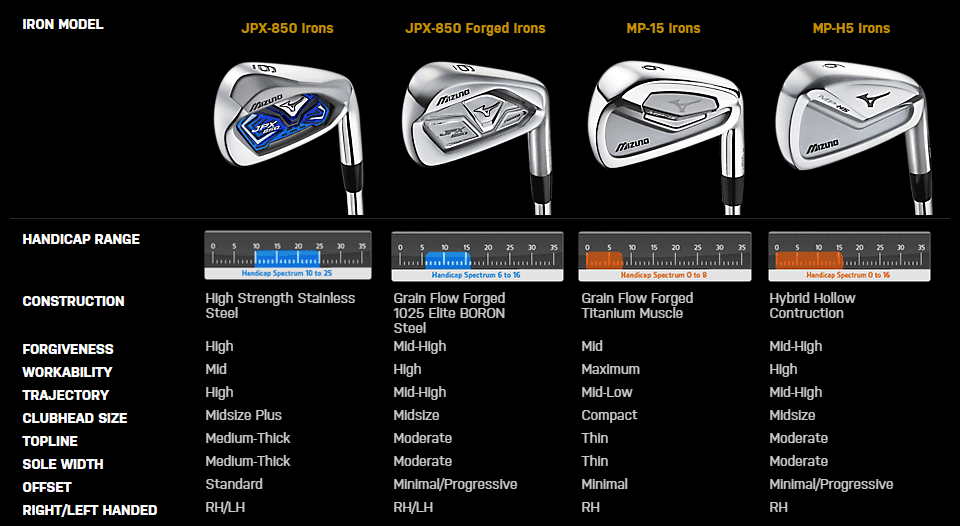
Key Terms and Their Meanings
Loft
The loft of a golf iron refers to the angle between the clubface and the vertical plane. It’s a critical factor that affects the distance and trajectory of the ball. A higher loft means a higher, shorter shot, useful for approaching the green. Conversely, a lower loft is designed for longer shots. As you move from the driver down to the wedges, the loft of each club increases.
Lie
The lie of a golf iron is the angle between the shaft and the ground when the club is in a playing position. This angle is crucial for ensuring the clubface contacts the ball squarely at impact. If the lie angle is incorrect for your swing, it can lead to shots veering off to the right or left. Properly fitting the lie can drastically improve shot accuracy.
Length
The length of the club affects the arc of your swing and, consequently, the impact position. Longer clubs typically lead to higher swing speeds but can be harder to control, affecting accuracy. Each golfer’s ideal club length varies based on their height and arm length, emphasizing the importance of custom fitting.
Weight
The weight of a golf iron can influence a player’s feel and swing speed. The overall weight is a combination of the head, shaft, and grip weights. Manufacturers often adjust these weights to influence the balance point of the club, affecting how it feels during the swing. A well-balanced club can help maintain a consistent swing tempo and improve shot accuracy.
Types of Golf Irons and Their Specifications
Golf irons can be broadly categorized into two main types: blades (or muscle-backs) and cavity backs. Each type has its own set of specifications, tailored to different playing styles and abilities.
Blades (Muscle-Backs)
Blade irons are traditionally designed with a full back on the clubhead, offering a smooth, thin look. They are typically favored by more experienced golfers due to their precision and ability to shape shots. Blades have a smaller sweet spot and require a higher degree of skill to hit consistently well. The specifications of blade irons often prioritize feel and control, with a more evenly distributed weight across the clubface.
Cavity Backs
Cavity back irons feature a hollowed-out back, redistributing the weight of the clubhead to the perimeter. This design creates a larger sweet spot, making cavity backs more forgiving of off-center hits. They are an excellent choice for beginners and intermediate players who benefit from the added forgiveness. The specifications of cavity back irons focus on increasing launch and distance, often with lower center of gravity and higher moment of inertia (MOI) values.
Customization and Fitting
Regardless of the type of iron, customization and proper fitting are paramount. Custom fitting tailors the specifications of the golf irons to the individual’s swing characteristics. Factors such as shaft flex, length, lie angle, and grip size are adjusted to optimize performance. A professional fitting can make a significant difference in playability, allowing golfers to maximize the potential of their irons based on their unique specifications.
By understanding the different types of golf irons and their specifications, golfers can make more informed decisions when selecting their clubs. Whether it’s a blade or cavity back, the right specifications can complement your skill level and playing style, enhancing your enjoyment and success on the course.
Decoding Golf Club Numbers
Deciphering the numbering system of golf clubs unveils valuable insights for golfers, helping them understand the characteristics and intended usage of each club in their set for optimal shot selection and gameplay strategies.

In golf, a typical set consists of irons, woods, hybrids, wedges, and putters, each designated with a number. The iron clubs come with numbers ranging from 2 to 9, indicating the loft angle of the clubface. Lower numbers have lesser loft, making them suitable for longer shots like from the fairway or tee.
Woods, on the other hand, are usually numbered from 1 to 5, with lower numbers denoting clubs designed for long-distance shots, such as off the tee. Hybrids, a cross between irons and woods, are often numbered 2 to 5 and provide versatility in various situations.
Understanding the Meaning Behind Golf Club Numbers
Diving into the meaning behind golf club numbers reveals the intended purposes and functionalities of different clubs, aiding golfers in comprehending the club selection process and optimizing their equipment choices for diverse shots.
When golfers pick up a club, whether it’s a 3-wood, a 7-iron, or a sand wedge, each number corresponds to a specific design and function tailored for particular situations on the course. A lower-numbered club like a 3-wood is usually reserved for long-distance shots off the tee or fairway, providing more power and distance. On the other hand, a higher-numbered club such as a 9-iron is better suited for shorter approach shots to the green, offering more loft and accuracy.
Numbered vs. Non-Numbered Golf Clubs
Drawing a comparison between numbered and non-numbered golf clubs elucidates the distinctions in club categorization and assists golfers in navigating the array of club options available, facilitating informed decisions based on their playing preferences and requirements.
Numbered golf clubs typically refer to the irons and wedges, featuring a numerical order that corresponds to the club’s loft angle. On the other hand, non-numbered clubs encompass drivers, fairway woods, and putters with specific designations rather than numerical sequence.
The categorization of golf clubs is crucial for golfers as it dictates the type of shot they can execute and influences their performance on the course. By understanding the differences, players can optimize their game by selecting the right club for various situations, be it a long drive off the tee or a delicate approach shot to the green.
Utilizing Golf Irons for Different Shots
Leveraging golf irons for various shots requires an understanding of club specifications, player dynamics, and shot requirements, enableing golfers to make informed decisions on club selection and shot execution for optimal performance.
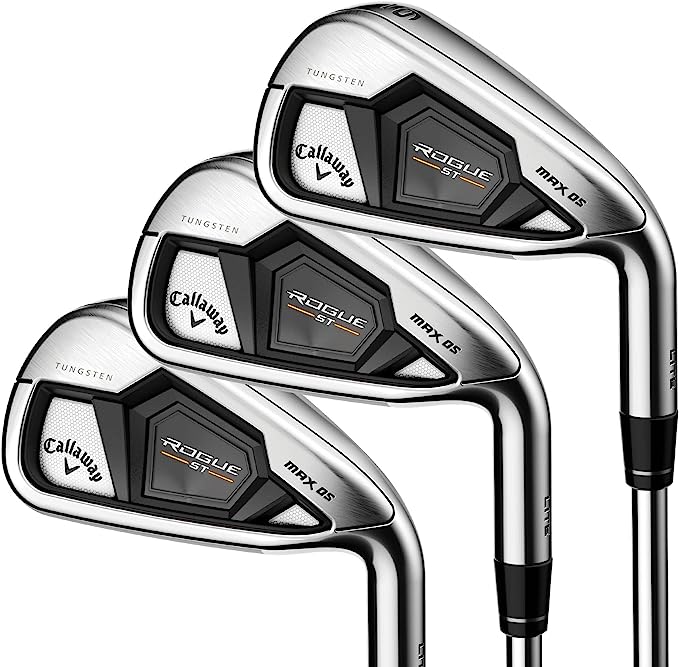
Golf irons are essential tools in a golfer’s arsenal, offering a wide range of options to suit different shot scenarios. In terms of maximizing the potential of these clubs, club fitting plays a crucial role in ensuring that the equipment matches the player’s unique swing characteristics and preferences.
Understanding the impact of loft on ball flight characteristics is key to honing in on the right iron for each shot. Higher lofted irons create a higher launch angle, while lower lofted irons produce a flatter trajectory with more distance. Golfers can strategically leverage these nuances based on their skill level and desired shot outcome.
Choosing the Right Club for Each Shot
Selecting the appropriate golf club for each shot is a critical decision that influences shot accuracy, distance coverage, and overall performance, underscoring the importance of club fitting and shot selection strategies tailored to player preferences and course conditions.
Each club in a golfer’s bag serves a distinct purpose, whether it’s to chip close to the pin, navigate a long fairway, or escape a tricky bunker. Choosing the right club can significantly affect how the ball reacts after impact, accounting for factors like loft, shaft length, and head design.
In terms of approach shots, precision is key. Utilizing a wedge or a short iron allows for better control over the ball’s flight path and spin, helping to ensure a soft landing on the green. For longer distance shots, drivers and fairway woods offer the power and distance needed to reach the target with fewer strokes.
Understanding the characteristics of each club in your bag can enable you to make informed decisions on the course, optimizing your chances of success in various game situations.
How to Choose the Right Specifications for Your Game
Choosing the right specifications for your golf irons involves understanding your playing style, skill level, and what you’re looking to improve in your game. Here are some steps and considerations to help you make the right choice:

Assess Your Skill Level and Goals
Beginners might lean towards irons with larger sweet spots and more forgiveness, while experienced players could prefer irons that offer greater control and feedback. Understanding your current skill level and what aspects of your game you wish to improve can guide your selection process.
Consider a Professional Fitting
A professional fitting is invaluable in choosing the right golf iron specifications. Fitters use advanced technology to analyze your swing, including speed, angle, and impact position, recommending specifications that complement your natural style.
Understand Your Swing
Know your swing speed and style. If you have a fast swing, you might need stiffer shafts and lower loft angles to control the ball flight. Conversely, players with slower swings could benefit from more flexible shafts and higher lofts to maximize distance.
Trial and Feedback
Testing different irons can provide direct feedback on what works best for you. Pay attention to how each club feels, the control it offers, and the consistency of your shots during these trials.
Also Read: Ultimate Guide to Choosing Beginner Irons
Maintaining Your Golf Irons
Maintaining your golf irons is crucial for ensuring they perform as expected over time. Proper care can also extend the life of your clubs, saving you money and hassle in the long run.
Regular Cleaning
After every round or practice session, clean the clubheads with a soft brush and mild soap. This removes dirt and grime, preventing rust and ensuring the grooves remain effective for better ball control.
Check for Wear and Damage
Regularly inspect your clubs for signs of wear or damage, such as dents, rust, or worn grips. Early detection can prevent minor issues from becoming major problems.
Store Properly
When not in use, store your golf irons in a cool, dry place. Avoid leaving them in extreme conditions, such as a hot car trunk, which can damage the glue holding the grips and even affect shaft integrity.
Professional Check-ups
Consider having your clubs checked by a professional annually. They can inspect for issues that might not be apparent to you, such as shaft alignment or subtle changes in loft and lie angles that can affect your game.
By understanding and applying these advanced specifications and maintenance tips, golfers can significantly enhance their performance on the course. Whether you’re a seasoned player or just beginning, taking the time to select the right equipment and keep it in good condition can make all the difference in your game.
Also Read: Maintaining your Golf Set
Conclusion
Navigating the world of golf iron specifications can seem like a daunting task at first glance. However, understanding these specifications is essential for any golfer looking to improve their game. From the basics of loft, lie, and length to the more advanced considerations of bounce, groove design, and material composition, each aspect of a golf iron’s specifications can significantly impact performance on the course.
The evolution of golf iron technology has brought about a myriad of options for golfers at all levels, offering the ability to customize clubs to fit individual swing characteristics and playing styles. Whether you’re a seasoned player looking to fine-tune your game or a beginner seeking to establish a solid foundation, the right golf irons can make a substantial difference.
Choosing the right specifications for your game involves a blend of understanding your own needs and preferences, professional fitting, and a bit of experimentation. Remember, what works for one player might not work for another, highlighting the importance of customization in the quest for the perfect set of irons.
Maintaining your golf irons is just as crucial as selecting the right ones. Regular checks, cleanings, and adjustments can ensure your clubs perform at their best for as long as possible. Just as a musician cares for their instrument, so too should a golfer care for their clubs.
Frequently Asked Questions
What are golf iron specifications?
Golf iron specifications refer to the various characteristics and features of a golf iron, such as loft, lie angle, shaft length, and clubhead design, that affect its performance and playability.
Why is it important to understand golf iron specifications?
Understanding golf iron specifications is important because it allows you to choose clubs that are best suited for your swing and playing style. It can also help you improve your game and achieve better results on the course.
How do loft and lie angle affect golf iron performance?
The loft of a golf iron is the angle of the clubface in relation to the ground, while the lie angle is the angle between the club’s shaft and the ground. These two specifications can greatly impact the trajectory and direction of your shots.
What is the standard length for golf iron shafts?
The standard length for golf iron shafts varies depending on the club, but typically ranges from 36 to 40 inches for a 6 iron. It’s important to find the right shaft length for your height and swing to ensure proper club control.
How do I determine which golf iron specifications are right for me?
The best way to determine which golf iron specifications are right for you is to get fitted by a professional or try out different clubs on the course or at a driving range. This will allow you to see which specifications feel most comfortable and produce the best results for your game.
Can I customize my golf iron specifications?
Yes, many golf manufacturers offer customization options for their irons, allowing you to choose specific loft, lie angle, and shaft options. This can be beneficial for players who have unique swing characteristics or preferences.
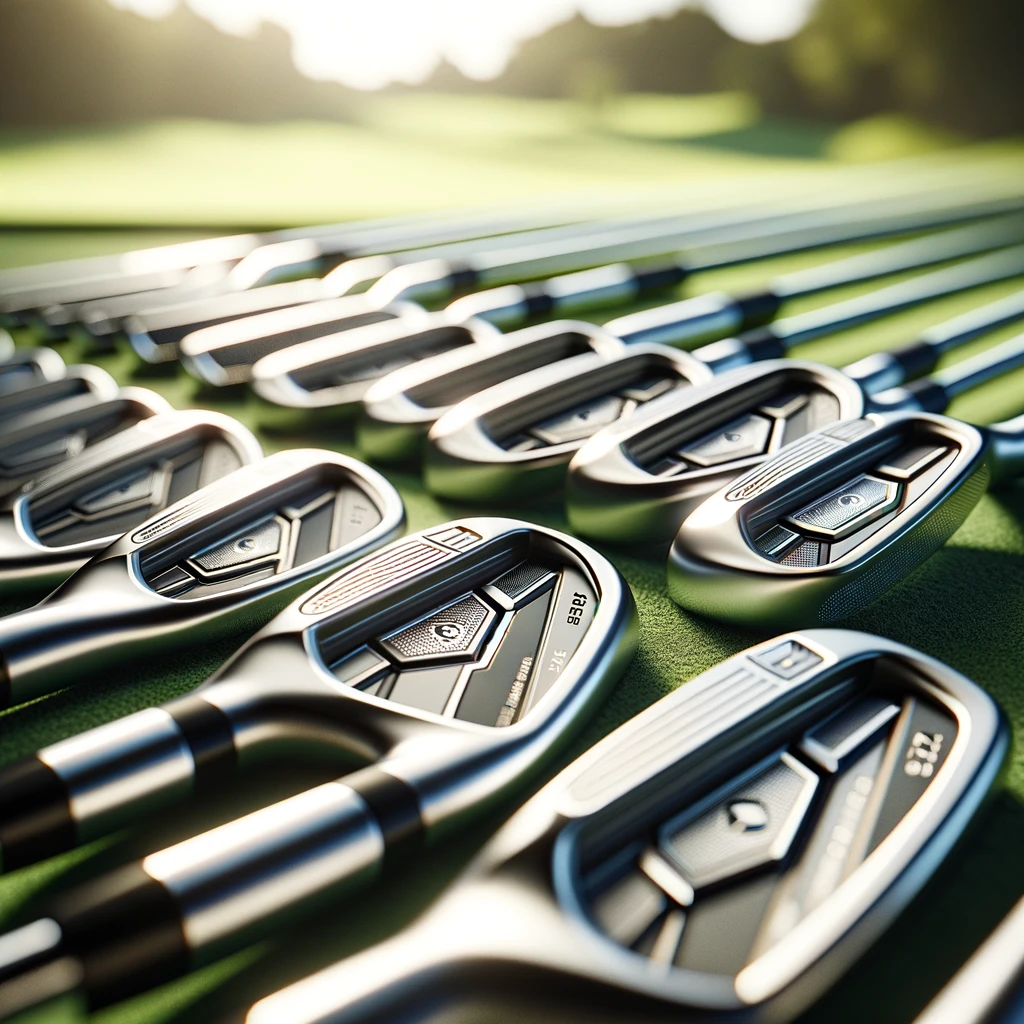


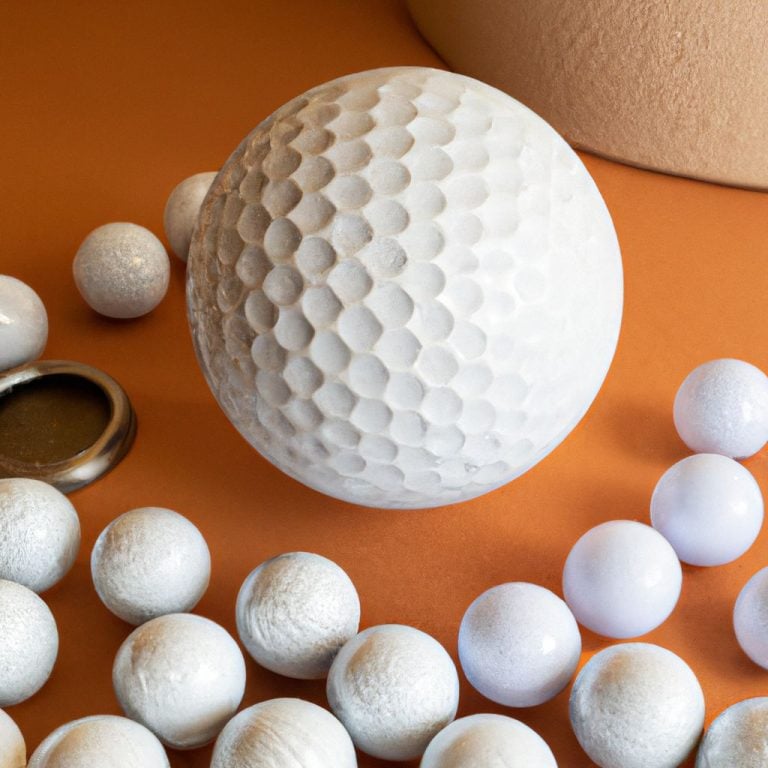
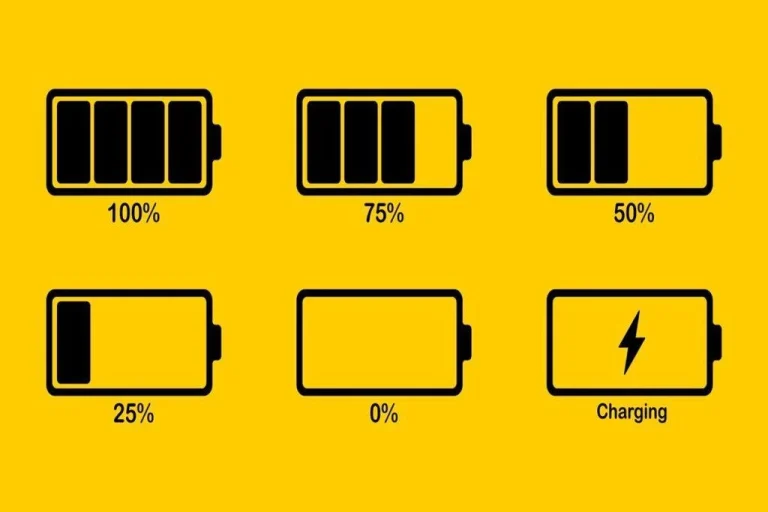
![Unlocking the Secret to Choosing the Best Golf Drivers for Mid Handicappers [2024]](https://www.fairwayfindings.com/wp-content/uploads/2024/03/Choosing-the-Best-Golf-Drivers-for-Mid-Handicappers-768x768.webp)
